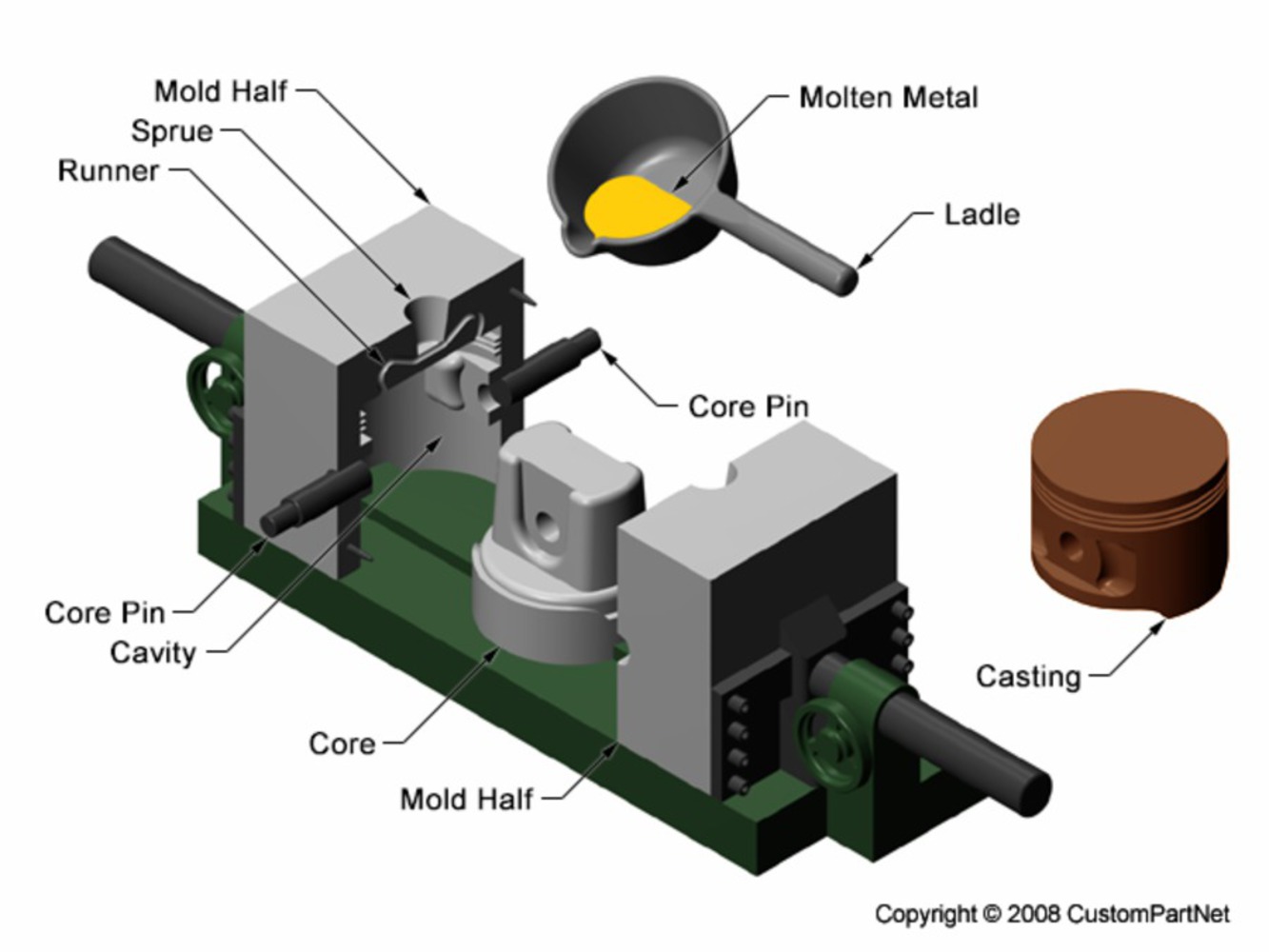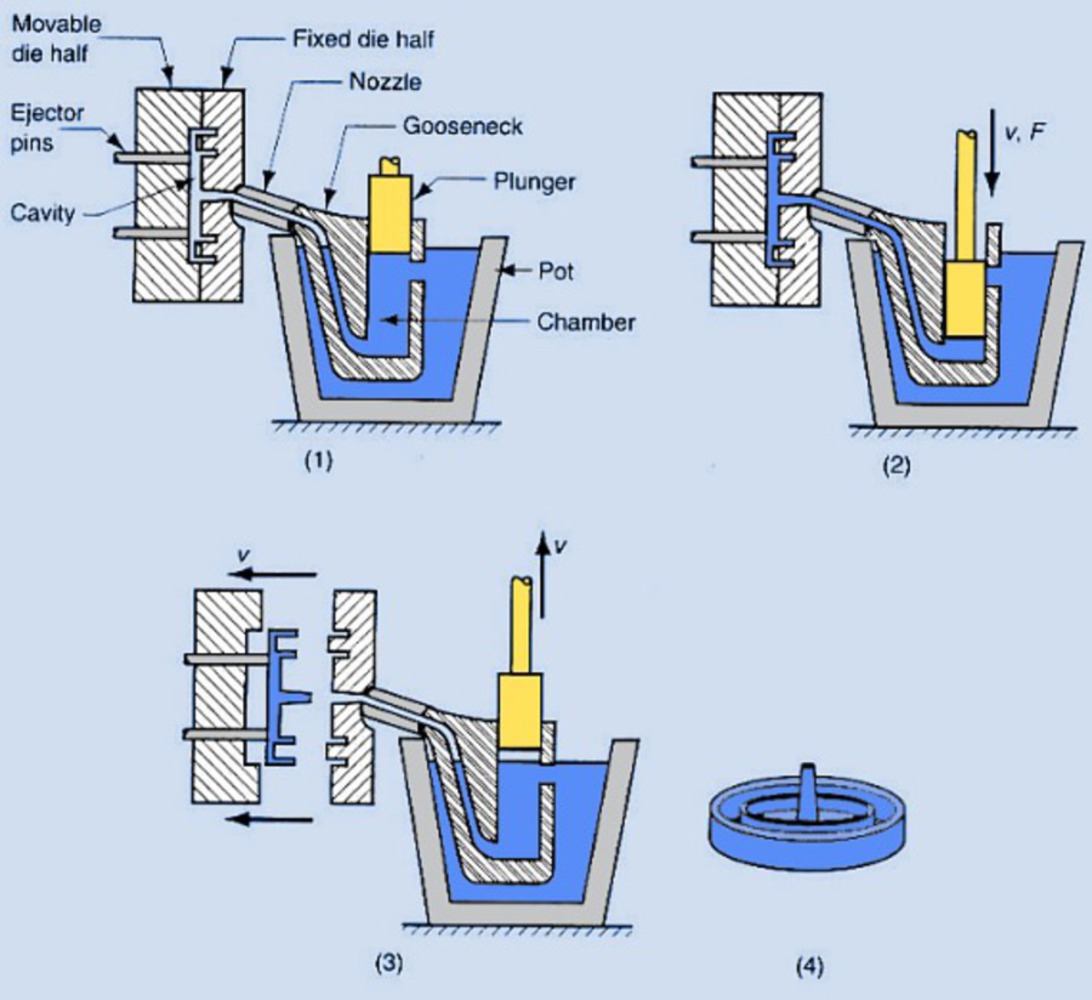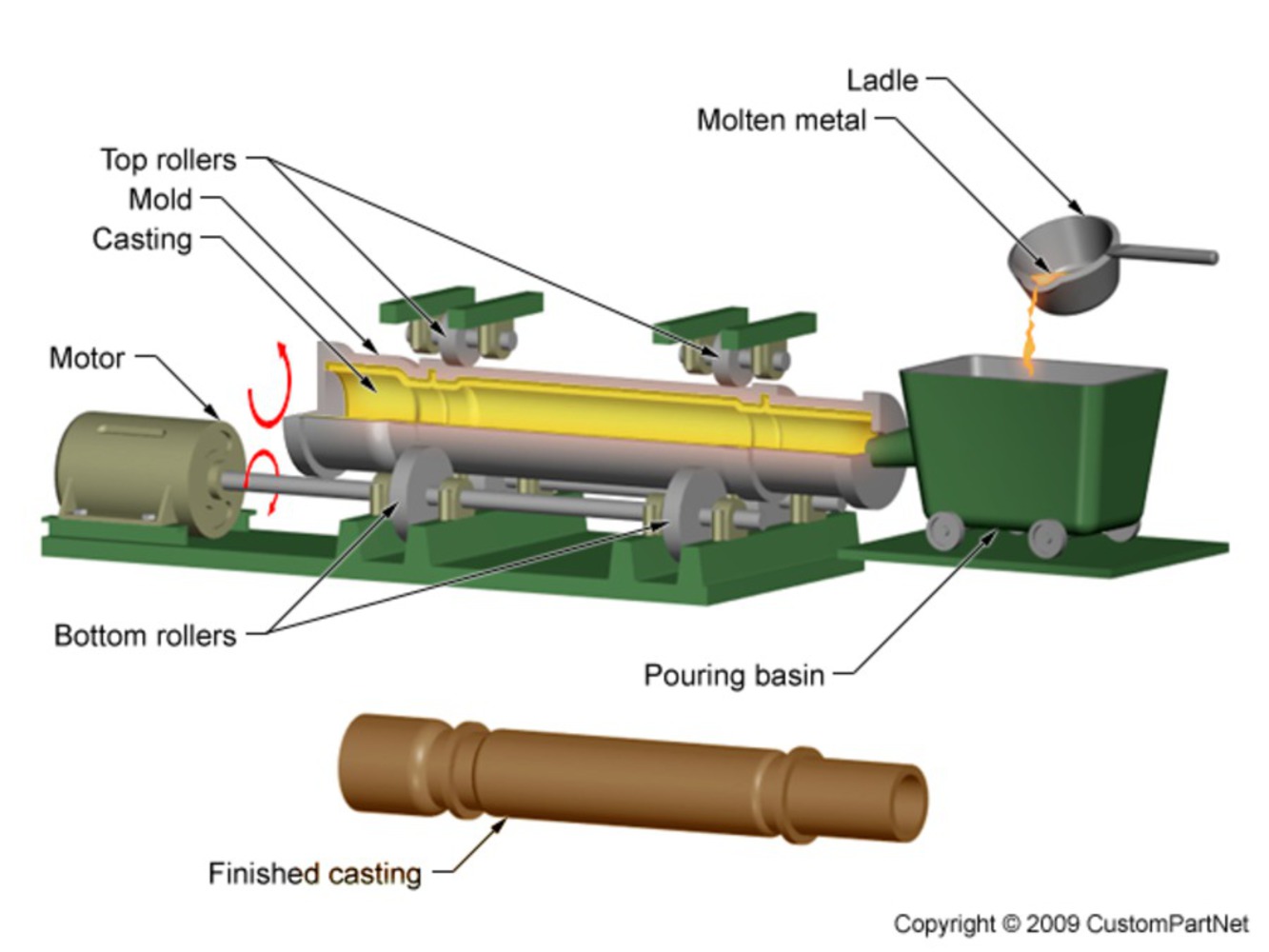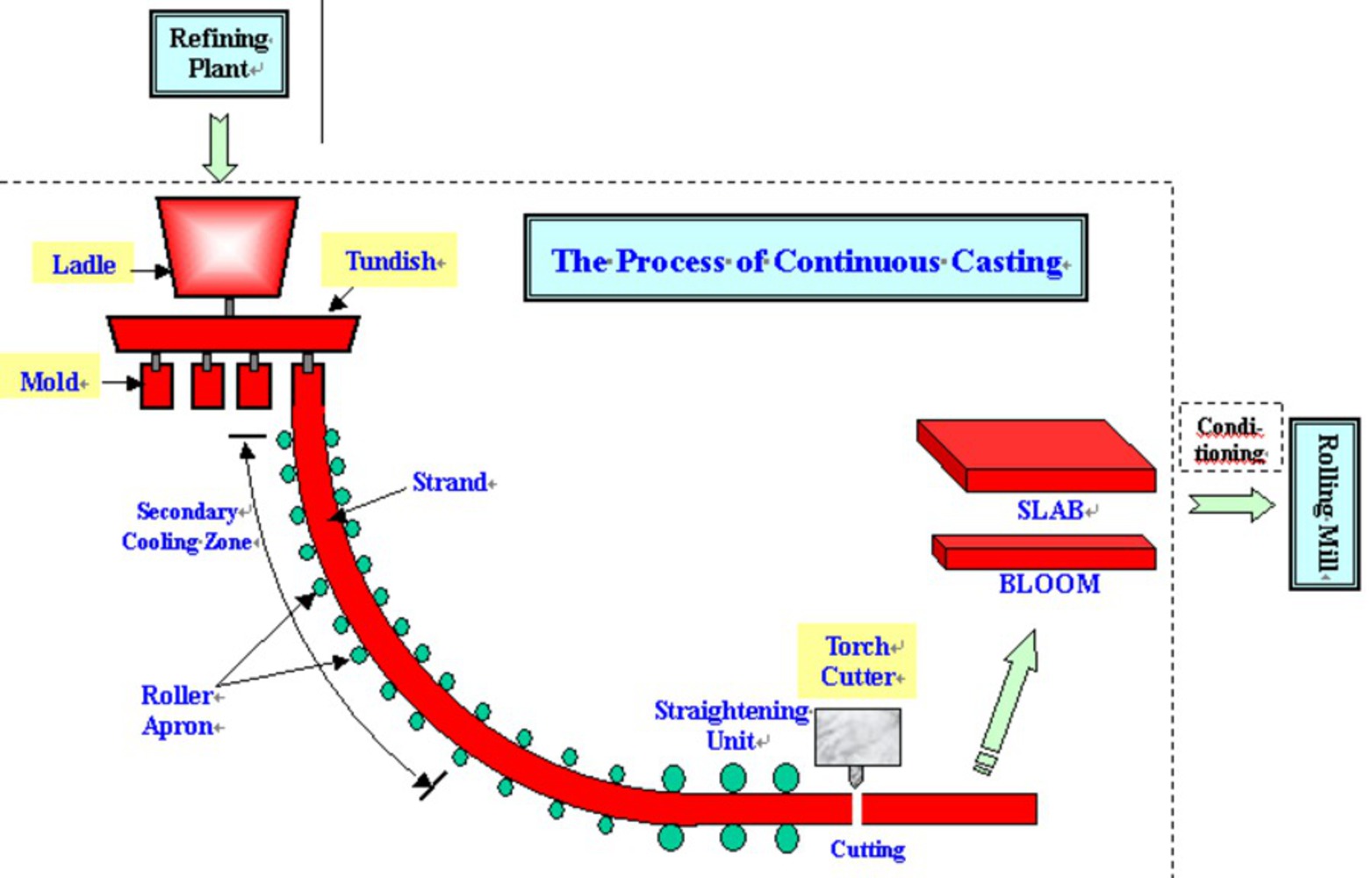How The Process Works
The process of metal casting involves pouring metal which has been melted down to liquid into a mold. The mold is in the shape of the part you want. Once the metal cools down it solidifies and remains in the shape of the mold. It is then broken out of the mold. The two main types of metal casting are expendable and non-expendable casting.
Expendable casting consists of using molds that cannot be reused. The mold must be reformed after each use. Examples of this are sand casting and plaster mold casting. Molds are made for sand casting by mixing sand with another substance like clay, and either packing it around the desired shape to create a mold, or carving out the shape you want. This is a relativity cheap for of casting, but the sand must be reformed after each use. Plaster mold casting is a similar process, but can only be used with low melting point materials like aluminium or copper.
Sand Casting Video - https://www.youtube.com/watch?v=K8SYhISGxN4
Non-expendable mold casting involves the use of reusable molds. Main types of casting include permanent, die, and centrifugal casting. Permanent molds are usually made from metal, most commonly gray cast iron. While these molds are reusable, they also wear out after a certain amount of use. These types of molds are also limited to metals with low melting points.



